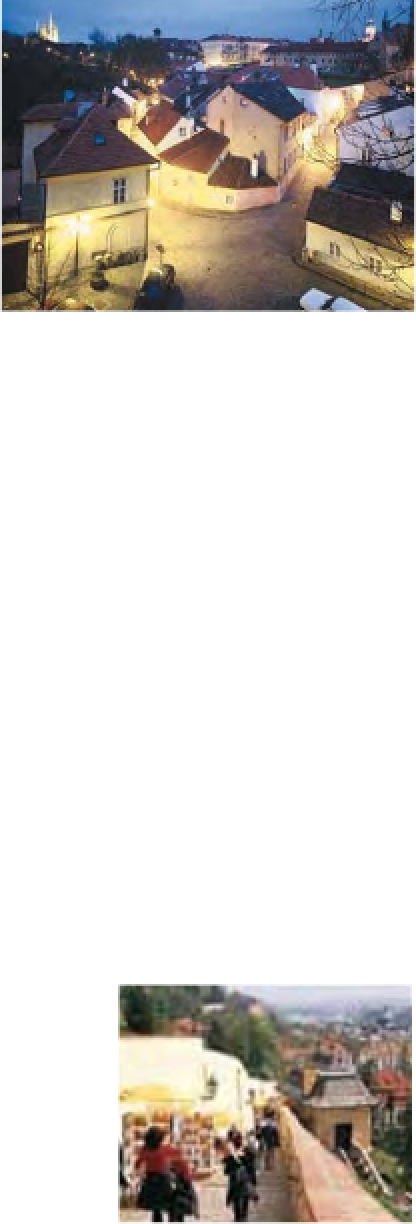Travel Reference
In-Depth Information
New Castle
Steps
The Royal Route,
established in the
15th century for the
coronation of George
of Pod∂brady, covered
the distance from the
Municipal House on
the Old Town Square
(see p73)
to the
castle. The last
stretch climbed the
hill right about here,
although the original
steps were reconstructed during
Empress Maria Theresa's
Hrad≤any renovation in the 18th
century. Halfway up is a music
pavilion, from which a brass
quartet of the Castle Guard
serenades the city each morning
at 10am.
d
Map C2
Nov† Sv∂t
astronomer Tycho de Brahe
(see
p35)
lived at No. 1 and
apparently found the noise of
nearby churchbells insufferable.
d
Map A2
Monument to Victims
of Police Torture
It seems a cruel joke, but the
Communist secret police had an
interrogation centre in this
picture-postcard neighbourhood.
The plaque on the wall at
Kapu≤ínská 2 honours those who
were brought here and coerced
into compromising themselves,
their neighbours and even their
family.
d
Map A2
Nov† Sv∂t
Nestled below the Loreto
(see pp20-21)
and at the head of
the Stag Moat is Nov† Sv∂t (New
World), perhaps the best street
in town for romantic strolling,
weather permitting. The
picturesque low houses were
built in the 17th century to
replace the medieval slums built
for castle workers after the
former burned down in 1541.
They remain unchanged by time,
still displaying their decorative
house signs. Rudolph II's choleric
Old Castle Steps
The relatively gentle slope of
the Prague Castle's “back-door”
entrance leads from the
Malostranská metro to the
castle's eastern gate. Local
Stag Moat
When the Stag Moat was not
fulfilling its defensive duties,
Prague's rulers used it as a
hunting park. Rudolph II is said to
have been particularly fond of
chasing deer around the narrow,
wooded gorge with his pet lions.
The Powder Bridge's earthworks
were recently excavated to permit
pedestrians access to both halves
of the moat.
Old Castle Steps
92











